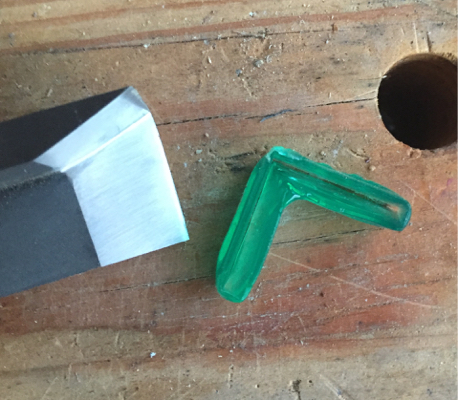The simplest solution of all is seems to be to just to buy plastic end caps/edge protectors, which are available from some online tool vendors:

But these have a few problems. The available sizes won't fit all chisel widths you might eventually collect (both Imperial and metric), and while you can always go up a size in theory as vintage chisels are often thicker than modern ones getting a good fit may still prove impossible.
So making your own is going to work out a better solution for a lot of woodworkers, especially those building a collection of vintage chisels. And taking the DIY approach allows you to make matching protectors for gouges of any sweep and potentially any other edge tools you want to protect as well.
The 'high-tech' solution is to use a dip product or a mouldable rubber or plastic. Dips include the Dip Seal mentioned by LeeG as well as the classic Plasti Dip beloved of toolheads*. Mouldable products include Sugru or the homemade equivalent and for something harder a thermo-forming plastic like Utile Plast, Mold-It or ThermoMorph.
A low-tech solution is one of the oldest, and that is a leather cap. These are still fairly common today on some very large chisels like slicks and used by some woodworkers for their smaller chisels too. You can buy them from a few sources but some are homemade.

I go even lower-tech than this and make simple tight-fitting cardboard sleeves. They work out a bit cheaper too since the cardboard is free, harvested from packaging such as blister packs or small boxes, scored and folded to fit and glued together with PVA glue. The results aren't pretty but they get the job done:

If aesthetics matter to you you can pick the cardboard with more care, or paint it after the glue has dried :-)
*See a hybrid method using Plasti Dip as the topcoat from Chris Schwarz here on Popular Woodworking. The older method he mentions in this piece he presented back in 2009 as Origami Chisel Protectors.





